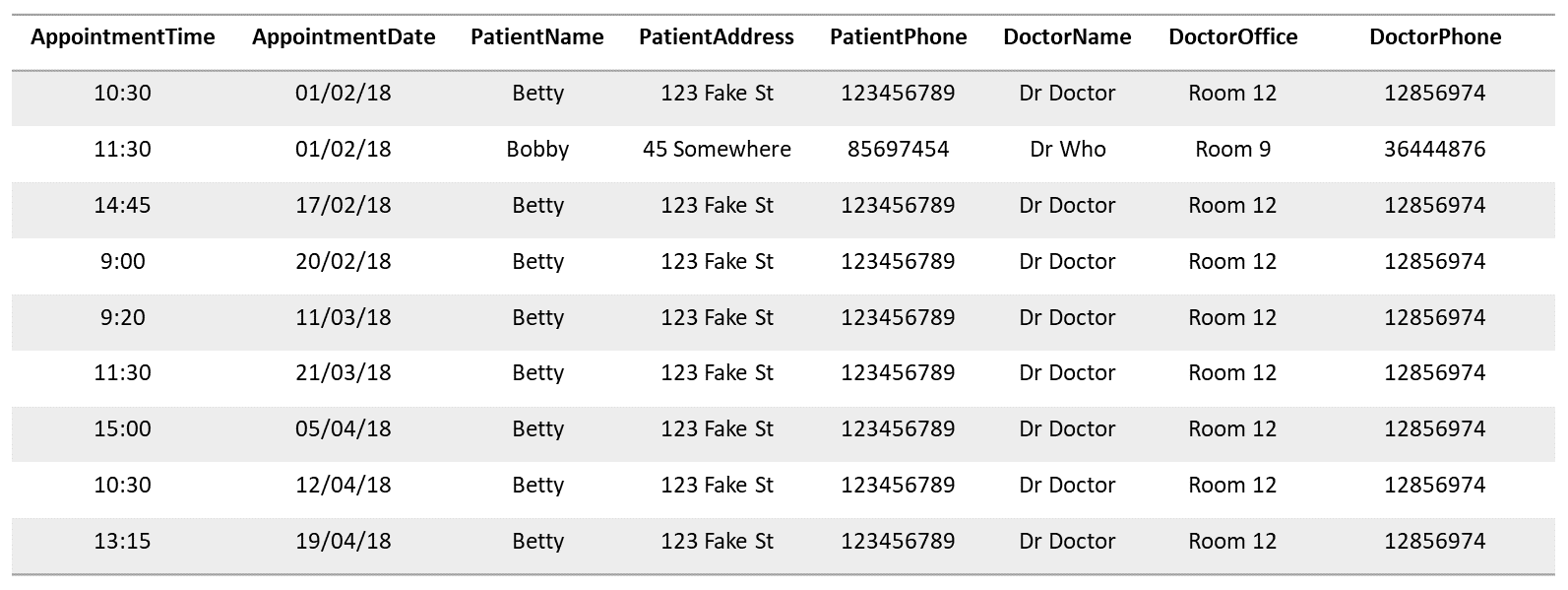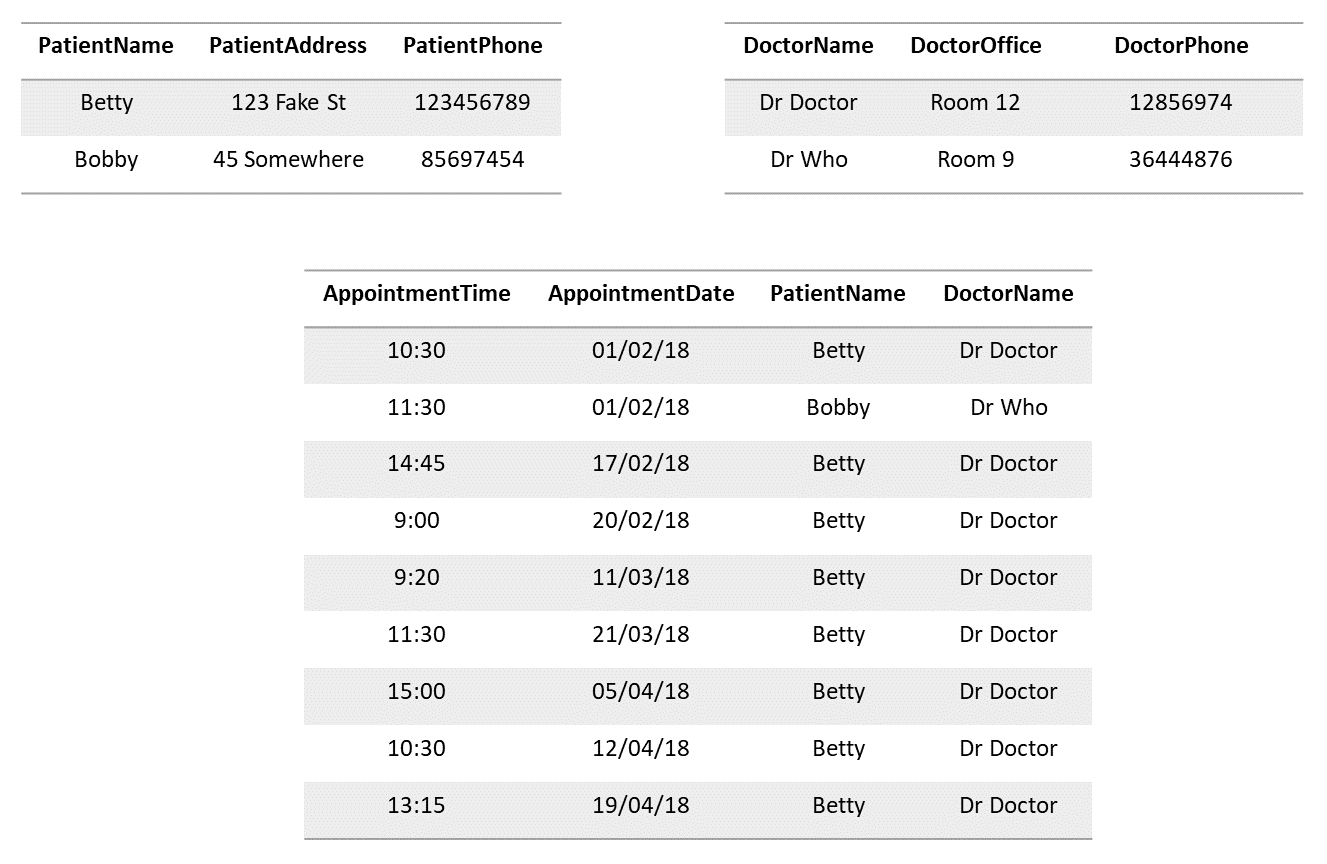Why use Relational Databases
Overview
Teaching: 10 min
Exercises: 0 minQuestions
What are Relational Databases?
Why use Relational Databases?
Objectives
Introduce the concept of Relational Databases.
Relational Databases
Lets start with a simple example, say, keeping a record of appointments for a medical clinic.
You want to record when and where the appointments were, details about patients, their name,
address, phone number, etc., and details about the doctors being seen.
You could start keeping a table like this:

What are your first thoughts about the problems with such a design?
For one thing, when we start getting repeat appointments…

…we start gathering a lot of redundant repeated data (imagine if we were recording even more information about doctors and patients!). Over time, this would mean a much larger table than is necessary and a lot of wasted storage space.
Another problem is that if a patient needs to update a detail, say new address, you’d have to find and replace every copy. Or what if we needed to add a new column of patient information?
This solution is not really scalable or maintainable.
So, we could use a design more like this:

Having separate tables for doctors and patients allows us to have a single record for any individual, which can be updated as required. A source of truth and no more redundancy. It’s a much neater design. However, what happens if we want to ask questions like “What’s the phone number of everyone that has an appointment with Dr Doctor on the 13th?” Answering such a question now involves looking up information from multiple tables.
Ideally we’d need a system that understood the relationships between the tables and could quickly and easily put information together and answer any questions (‘queries’) like that example. This is what a Relational Database system provides.
An improved Relational Database design for these tables could be:

Each ‘record’ is given a unique identifier or ‘key’. Integers are commonly used; they are small
to store, easy to assure uniqueness of, and efficient to index and retrieve. Note that a
person’s name is rarely a reliable unique identifier in a real world application!
In our appointments table, patients and doctors are referred to simply through their unique
identifier. Such a field is called a ‘foreign key’, i.e. a key value that belongs to another
table. Database systems are designed to be able to efficiently make use of table relationships
defined through foreign keys, to lookup associated records through multiple tables as required.
This final table design may be represented with an Entity Relationship Diagram:

In this diagram, a line between boxes represents a relationship between tables. More specifically, the branching/forking of the line at one end, but not the other, defines the relationship as being ‘one-to-many’. E.g. A patient may appear in many appointments, but an appointment has only one patient.
SQL
There are many relational database systems implemented, following similar design principles to efficiently store and query large volumes of data. Such database systems are quietly behind the scenes of many websites you may interact with, e.g. Facebook, especially if the website provides any searchable or sortable data.
Some of the most popular database systems include MySQL, SQL Server, Oracle and PostgreSQL. These systems (and others) have settled on a common (mostly consistent) language and syntax for interacting with them, for defining tables and relationships, for inserting/altering data and for making queries. This language is called SQL - Structured Query Language.
SQL is what we’ll be learning through this tutorial.
To introduce SQL, we’ll be making use of a lightweight, portable SQL database system, ‘SQLite’.
Key Points
Relational Databases are an efficient way to store and query data…
making use of relationships between multiple tables of information.
The most common syntax for interacting with such databases is SQL- Structured Query Language.
Implementations include MySQL, SQL Server, Oracle and Postgres.